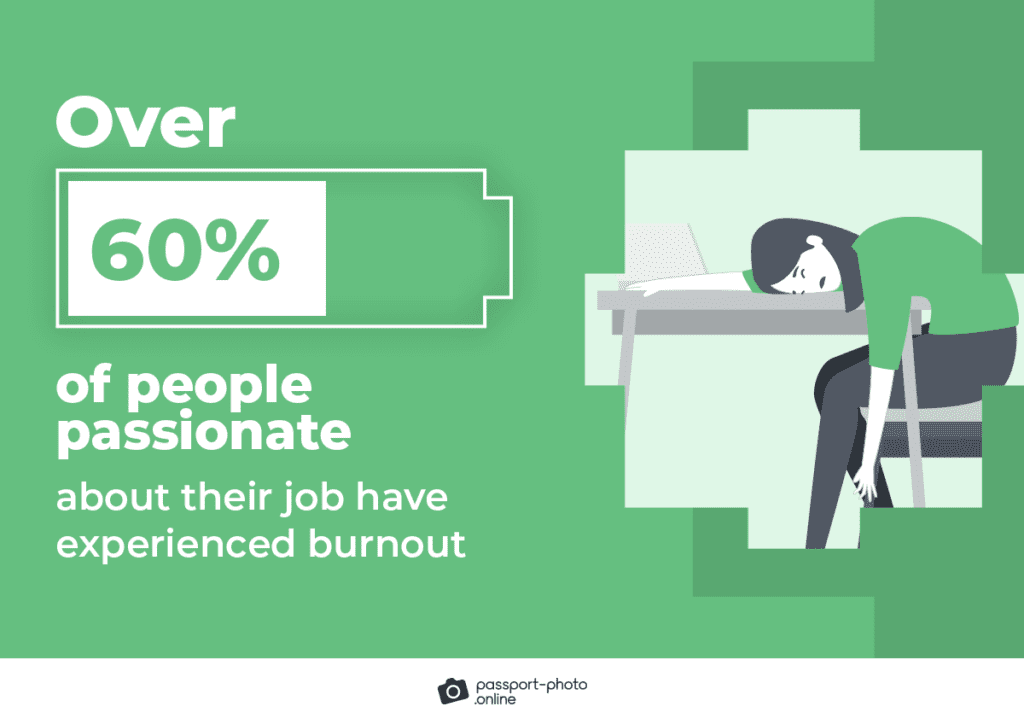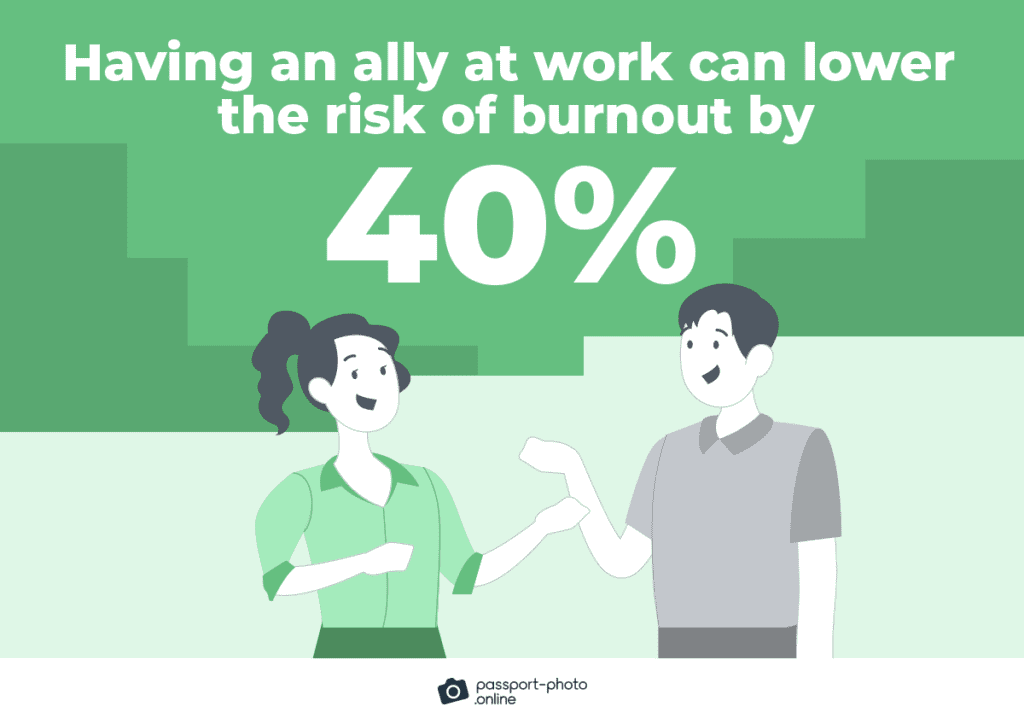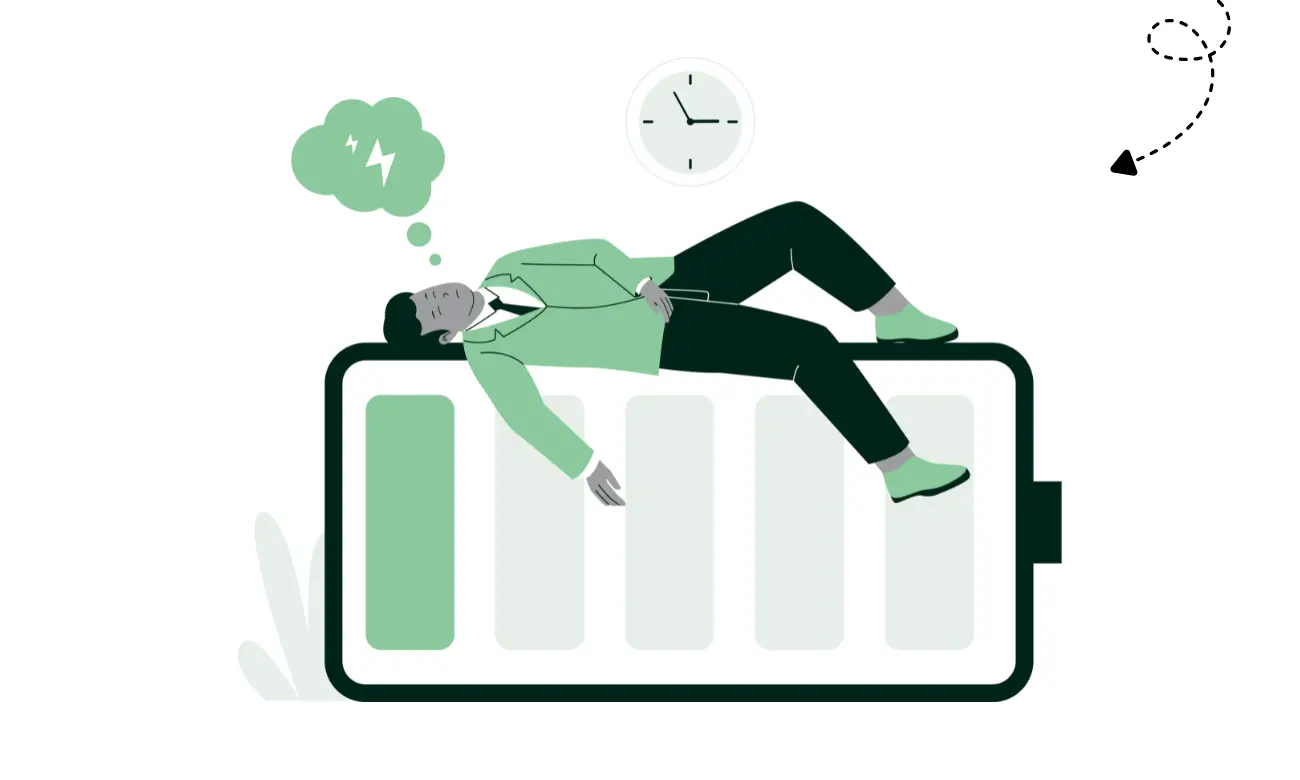Curious about the state of burnout at work?
We’ve gathered and verified the latest employee burnout statistics to show how it affects workers and organizations.
Let’s make a start:
Key Employee Burnout Statistics
- In 2025, 66% of US employees reported experiencing some level of burnout.
- In 2025, 91% of UK adults said they faced high or extreme stress.
- Burnout costs employers between $4,000 and $ 21,000 per worker annually.
- Burned-out employees are over 50% more likely to seek a new job.
- 36% of employees admit their organizations are doing nothing to prevent burnout.
Prevalence and Correlation of Burnout
- There’s a strong correlation of 0.5 between burnout, depression, and anxiety.
- In 2025, 50% of US workers said they faced moderate to severe burnout, depression, or anxiety.
- New Mexico ranked as the most stressed US state in 2025, scoring 60.52 out of 100.
| Rank | State | Total Stress Score |
|---|---|---|
| 1 | New Mexico | 60.52 |
| 2 | Nevada | 59.90 |
| 3 | Louisiana | 56.21 |
| 4 | West Virginia | 55.28 |
| 5 | Mississippi | 54.66 |
| 6 | Tennessee | 53.37 |
| 7 | Arkansas | 53.30 |
| 8 | Alabama | 52.80 |
| 9 | Florida | 51.33 |
| 10 | Oregon | 51.21 |
- Over 60% of people passionate about their job have experienced burnout.

Causes and Risk Factors
- For 24% of US employees, burnout stems from having more work than they have time for or a lack of resources or proper tools.
| Cause of Burnout Among US Employees | % Affected |
|---|---|
| Poor economy impacting well-being | 20 |
| Taking on extra work due to labor shortages | 19 |
| Concern about AI’s impact on their role | 13 |
Workplace Support and Prevention
- US employees whose companies support mental health are twice as likely to report no burnout or depression.
- In 2025, only 32% of working adults in the UK said their workplace had measures to detect and prevent employee burnout.
- Only 21% of workers can openly discuss burnout with their HR department.
- Only 20% of employees report being managed in a way that motivates them to perform better.
- Having an ally at work can lower the risk of burnout by 40%.

- 53% of employees believe having a job that allows them to maintain a healthy work-life balance is crucial.
- Over 40% of workers believe employers should encourage day-offs and mental health training (e.g., therapy, yoga, meditation) to reduce burnout.
Consequences of Burnout
- Every nine in 10 workers admit that stress or frustration can impact their work quality.
- Burnout negatively impacts the personal relationships of 83% of workers.
- 60% of workers who experience burnout are more likely to take a day off.
- The chronic sense of exhaustion associated with burnout can lead to depression and other disorders.
- 60% of workers who experience burnout feel physically and emotionally exhausted after work.
Economic Impact
- A 1,000-person company in the US loses about $5M a year due to employee burnout.
| Employee Type | Average Annual Burnout Cost | 95% Range |
|---|---|---|
| Hourly (non-manager) | $3,999 | $3,958–4,299 |
| Salaried (non-manager) | $4,257 | $4,215–4,299 |
| Manager | $10,824 | $10,700–10,948 |
| Executive | $20,683 | $20,451–20,915 |
- 46% of HR professionals say burnout makes up almost half of their annual turnover.
Learn More
Looking for more statistics? Check out these:
- Returning to the Office Statistics
- Virtual Meeting Statistics
- Side Hustle Statistics
- LinkedIn Statistics
- Digital Nomad Statistics
- Average Screen Time Statistics
- SaaS Statistics
- Freelance Statistics
- Workation Statistics
Sources
- BCG, “Four Keys to Boosting Inclusion and Beating Burnout”
- Blanding M., “National Health Costs Could Decrease If Managers Reduce Work Stress”
- Blind, “Close to 60 Percent of Surveyed Tech Workers Are Burnt Out”
- CUNY, “Employee Burnout Can Cost Employers Millions Each Year”
- Cole M., Walter F., Bedeian A., O’Boyle E., “Job Burnout and Employee Engagement. Journal of Management”
- FlexJobs, “Mental Health America Survey: Mental Health in the Workplace”
- Frögli E., Rudman A., Lövgren M., Gustavsson P., “Problems with Task Mastery, Social Acceptance, and Role Clarity Explain Nurses’ Symptoms of Burnout during the First Professional Years: A Longitudinal Study”
- Gallup, “State of the American Workplace Report”
- García-Arroyo J., Moncayo I., García A., Segovia A., “Understanding the Relationship between Situational Strength and Burnout: A Multi-Sample Analysis”
- Glass D., McKnight J., “Perceived Control, Depressive Symptomatology, and Professional Burnout: A Review of the Evidence”
- Kim H., Stoner M., “Burnout and Turnover Intention among Social Workers: Effects of Role Stress, Job Autonomy and Social Support. Administration in Social Work”
- Koutsimani P., Montgomery A., Georganta K., “The Relationship between Burnout, Depression, and Anxiety: A Systematic Review and Meta-Analysis”
- Leonhardt M., “The Great Resignation Is Sparking Fears of a ‘Great Burnout’ That Could Cripple America’s Workforce”
- Maslach C., Leiter M., Schaufeli W., “Burnout: 35 Years of Research and Practice”
- Mental Health America, “Depression in the Workplace”
- Messias E., Flynn V., “The Tired, Retired, and Recovered Physician: Professional Burnout versus Major Depressive Disorder”
- Moodle, “State of Workplace Learning Report”
- Mind Share Partners, “Mental Health at Work Report”
- Mental Health UK, “The Burnout Report”
- Oyewunmi A., Akinnusi D., Oyewunmi O., “Of Predators and Preys: Corporate Psychopathy and Employee Burnout as Parallels”
- Szmigiera M., “Industries with the Highest Employee Burnout Rate Worldwide”
- Statista, “Stress and Burnout”
- Vullinghs J., De Hoogh A., Den Hartog D., Boon C., “Ethical and Passive Leadership and Their Joint Relationships with Burnout via Role Clarity and Role Overload”
- Wigert B., Agrawal S., “Employee Burnout, Part 1: The 5 Main Causes”
- Wigert B., Agrawal S., “Employee Burnout, Part 3: How Organizations Can Stop Burnout”
- Zopiatis A., Constanti P., “Leadership Styles and Burnout: Is There an Association?”

As a Digital PR specialist and a member of the Society of Professional Journalists (SPJ), Max has 5+ years of writing experience.
Over the course of his career, Max’s work has garnered significant attention, with features in numerous prominent publications such as The New York Times, Forbes, Inc., Business Insider, Fast Company, Entrepreneur, BBC, TechRepublic, Glassdoor, and G2.









